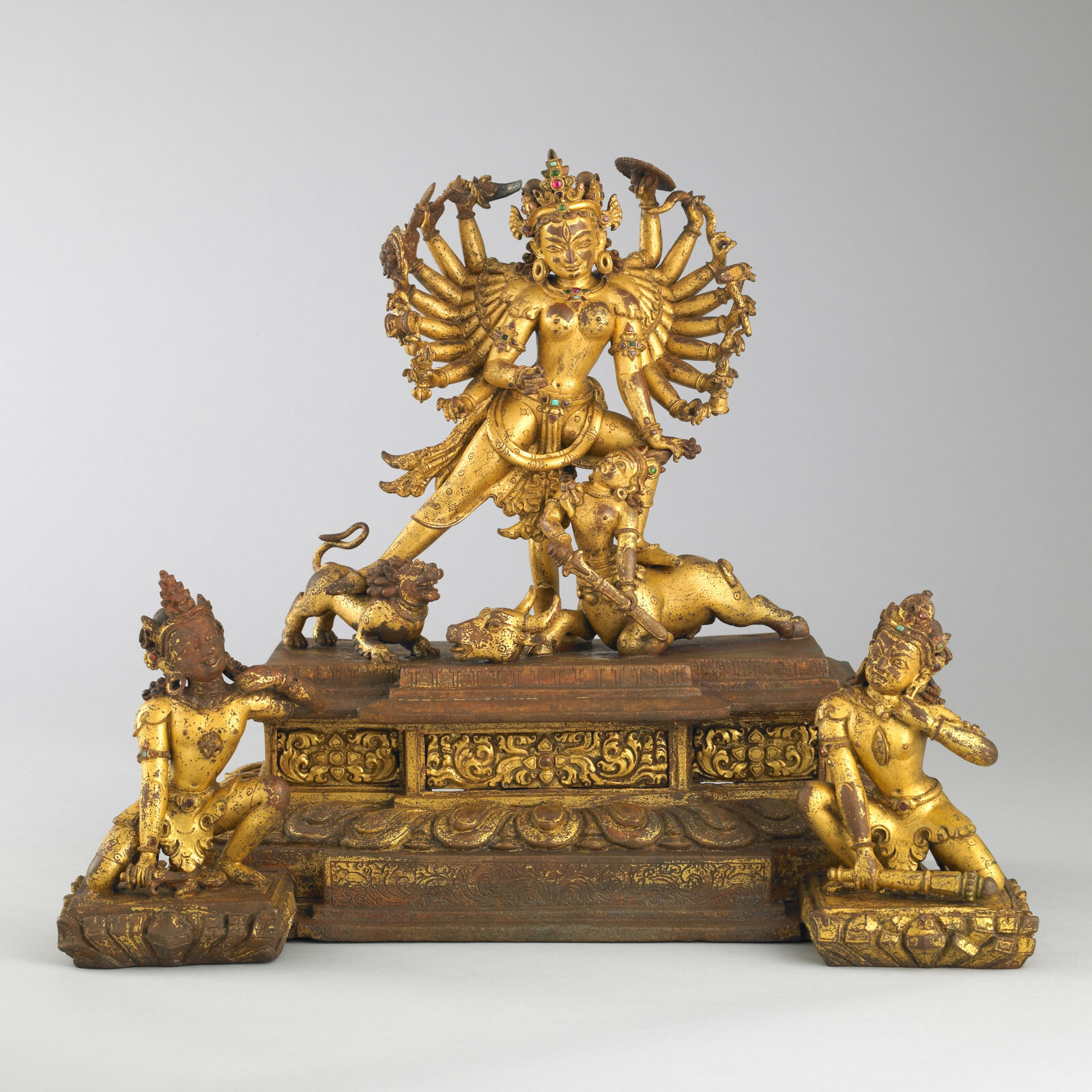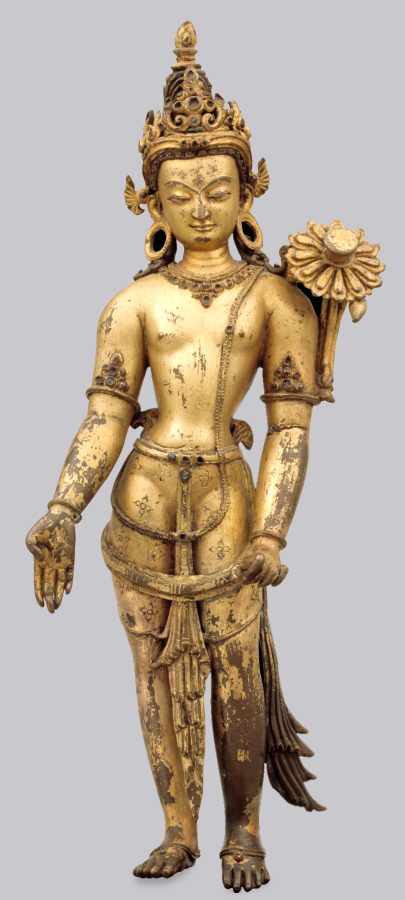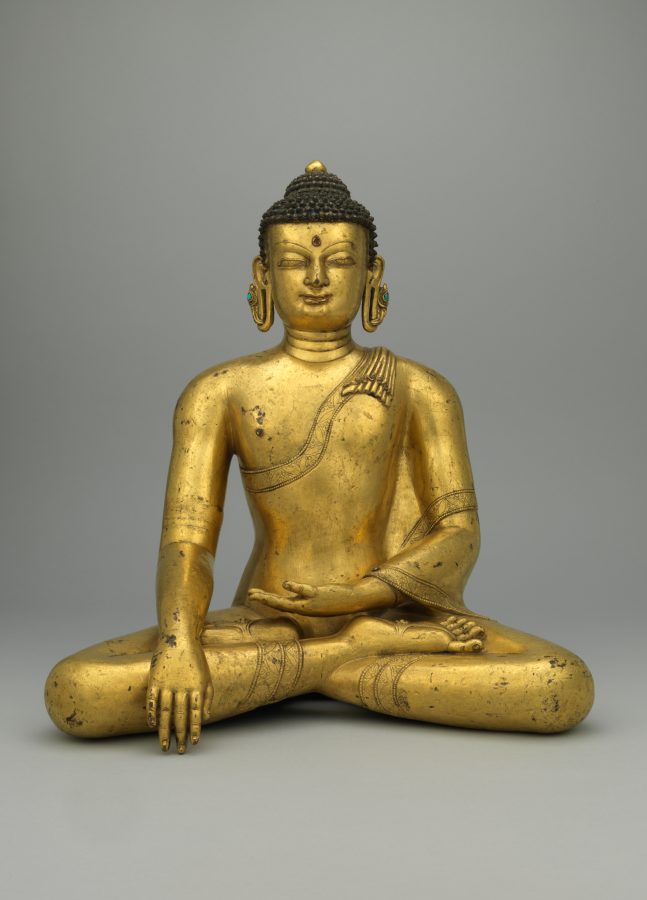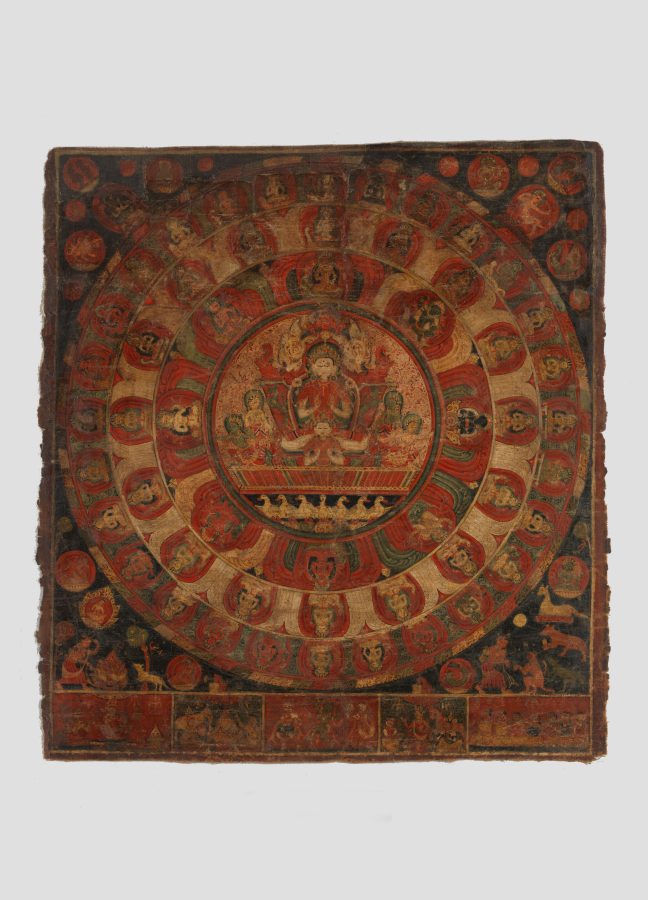Rubin Museum of Himalayan Art
C2005.16.8
Avalokiteshvara is one of the most popular deities in Nepal, where 108 forms of him are known. In his simplest form, extending his right hand in the gesture of giving and holding the stalk of a lotus (now broken) in his left, he is often called Padmapani, or Lotus-in-Hand.
Metal sculpture figures from Nepal share a number of characteristic features, such as a gentle smile and hawk-like nose. This sculpture is remarkable for its simplicity of line, graceful proportions, and elegant jewelry. The subtle modeling of the body contrasts with the voluminous and pointed ends of the bodhisattva’s clothing and the large, slim- petaled lotus blossom over his shoulder. The reddish tone of the metal, seen where the gilding has worn away, indicates a high copper content, which is typical of Nepalese sculpture.
View full collection record




